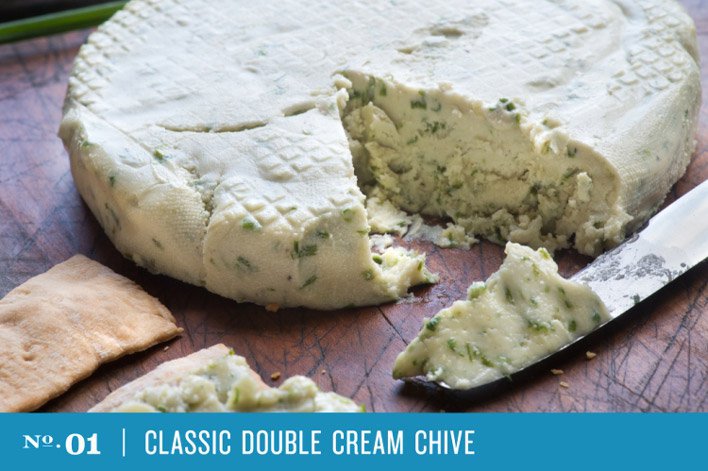
Guinness sells about 10 million pints a day across 100 countries. On St. Patrick’s Day, that number hops to 13 million. When Arthur Guinness set up shop in Dublin back in 1759, he never would’ve guessed that his stout would become the unofficial beer of the Irish and the go-to beverage to shout to the bartender come March 17 (besides Jameson). Even Obama honored his Irish lineage with a highly-publicized Guinness at a pub in Ireland last year. But the classic brew isn’t for everyone. For the hardline vegetarians and vegans out celebrating this St. Paddy’s Day: there could be traces of fish bladder in your Guinness.
Isinglass, a gelatine-like substance made from the air-bladders or sounds of fish like the sturgeon is added to cask beers like Guinness to help any remaining yeast and solid particles settle out of the final product. As the finings pass through the beer, they attract themselves to particles in the fermented beer that create an unwanted “haziness” in the final product and form into a jelly-like mass that settles to the bottom of the cask. While beer left untouched will clear on its own, isinglass speeds up the process and doesn’t affect the final flavor of the beer once removed.
The word isinglass most likely comes from the corruption of the Dutch word huisenblas which translates directly to “sturgeon’s bladder,” but its history goes back a little further. Its archaic, Latin root, ichthyocolla, comes from the Greek words ikhthus (fish) and kolla (glue)—defining the mucous-like substance as “fish glue.”
According to the Encyclopaedia Britannica Volume IX, originally published in Edinburgh in 1797, the method of using isinglass as a clarification agent was long a secret in the hands of the Russians who were known for their exceptionally strong isinglass-made glue. The entry, which draws heavily from Humphrey Jackson’s 63rd volume of the Philosophical Transactions, cites the principal research of Pomet on the process of making isinglass:
“As to the manner of making the isinglass, the sinewy parts of the fish are boiled in water till all of them be dissolved that will disolve; then the gluey liqur is strained and set to cool. Being cold, the fat is carefully taken off, and the liquor itself boiled to a just consistency, then cut to pieces and made into a twist, bent in form of a crescent, as commonly fold: then hung upon a firing and carefully dried.”
Pomet’s experiments with the sounds of fish and its chemical properties lead him to discover the fish membrane’s ability to clarify beer. Adding an ounce and a half of “good isinglass” to a gallon of stale beer to steep for a few days, he found that the bad beer “was converted into good fining, of a remarkably thick consistence.” When he tried this with the same quantity of glue, the experiment yielded only “mucilaginous liquor, resembling diluted gum water which instead of clarifying beer, increased both its tenacity and turbidness.”
Combining the insinglass with malt liquor, he found that a “vast number of curdly masses became presently formed”, became attracted to the “feculencies of beer,” and, with the “well known laws of gravitation,” the unwanted particles combined with the isinglass and fell to the bottom of the barrel.
The process is simple: Remove the membranous parts of fresh-caught fish, scrape off the mucosity with a knife, roll, twist and dry in open air. The thicker the sounds are, the better the isinglass. The air-bladders of fresh water fish are preferred because they are more flexible and delicate. Swim bladders from sturgeon—especially that from the Beluga sturgeon which yielded the greatest quantity of sounds—were used to make isinglass until the 1795 invention of a cheap cod substitute by William Murdoch. Summer is the best time to collect, as frost interferes with the fish’s gelatinous principles. After the drying process, “good” isinglass, once held up to a light, exhibits prismatic colors.
Guinness first used isinglass in its Dublin brewery in the mid to late 19th century. A young fermentation scholar by the name of Forbes Watson, the son of an Edinburgh solicitor, was a pioneer in the experimentation and examination of the mineral constituents of Guinness beer. Within six weeks of being hired at the brewery, Watson discovered a way to recover beer at the bottom of the vat saving Guinness 6,000 pounds a year. Very early in his career, he toyed with pasteurization and introduced new methods of breaking down isinglass finings that would increase the lifetime of the stout. In 1909, Watson was killed in an accident with a machine he had helped create at age 37. After he died, little scientific ground was broken for the company until the 1930s.
With the presence of modern gelatin, isinglass is rarely used today with the exception of British “real ale” cask beers. Generally, British beers still use isinglass, gelatin, glycerin or casein. According to a recent statement made by Guinness:
“All Guinness brands are free from animal matter and from contact with animal matter. However, isinglass, which is a by-product of the fishing industry, is used as a fining agent for settling out suspended matter in the vat. The isinglass is retained in the floor of the vat but it is possible that minute quantities might be carried over into the beer.”
For many strict vegetarians and vegans even “minute quantities” of an animal product is enough to abstain from eating a particular food. Much like the honey debate (Does it hurt the bee? Or does it not count as an animal product? What about silkworms and cochineal bugs?) flexitarians and militant vegans may disagree on how to classify the potential traces of isinglass in beer.
For those who are on the anti-isinglass side of the spectrum, carrageenan, a type of red algae, also called Irish Moss, (an appropriate title for St. Paddy’s Day) also works as a fining agent in beer, but doesn’t yield the same results as isinglass. The k-carrageenan interacts with the proteins that create cloudy beer and form the molecular equivalent of marbles in syrup at the bottom of the batch. Vegan brands like Deschutes Brewery in Bend, Oregon use carrageenan while others like Odell Brewing Co. use centrifugation for clarification.
Strict vegetarians and vegans often choose German or Belgium brews which abide by “purity laws” (first enacted in 1516) which require that breweries use only ingredients of water, grain (barley or wheat), hops and yeast. The ruling was officially lifted in 1987 by the European Court, but the tradition of the law remains.
So, before you step out on the town in your green get-up and order an Irish stout this St. Patrick’s Day, remember: Pescetarians, rejoice—Guinness is still “good for you“. Vegans, stick to whiskey.
Source: http://www.smithsonianmag.com




Great article – thank you very much for the information. I don’t care much for whiskey, but I have enjoyed Guinness over the years…I’ll be looking into some German and Belgium beers! I continue to be amazed at the number of ways animals products are used in the production of foods and goods. Thanks.
Thanks for the info, but why do we refer to these types of products as vegan/non-vegan? Let’s call it what it is — vegetarian/non-vegetarian! A lot more people will listen.
I’m pretty sure Guinness drought does NOT use fish bladders anymore to filter the beer….. Among some other Guinness beers.
All Guinness beer has been vegan since 2018.
https://www.veganfoodandliving.com/news/its-official-all-guinness-now-suitable-vegans-draft-bottle-can-form/